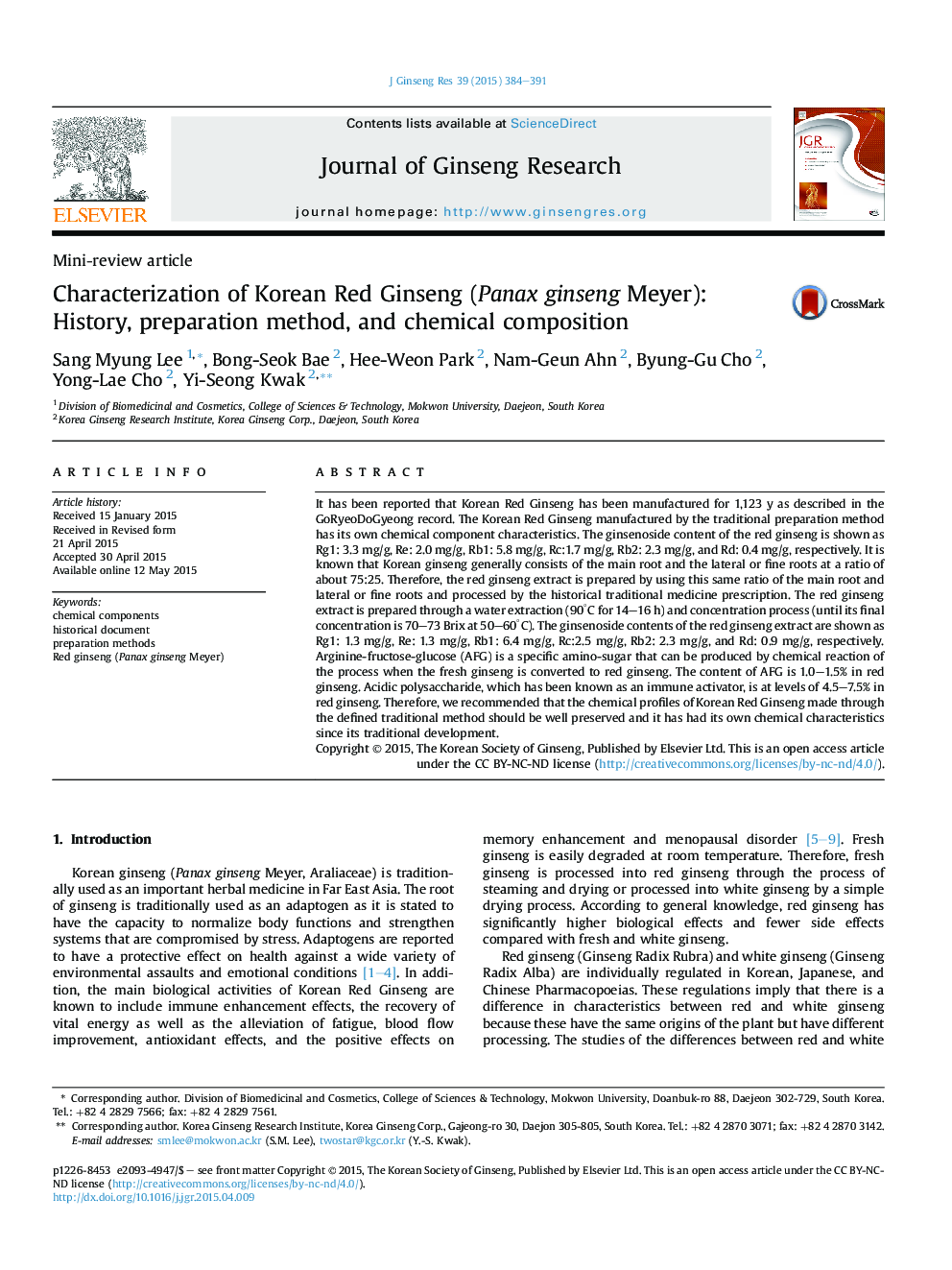| Article ID | Journal | Published Year | Pages | File Type |
|---|---|---|---|---|
| 3099300 | Journal of Ginseng Research | 2015 | 8 Pages |
It has been reported that Korean Red Ginseng has been manufactured for 1,123 y as described in the GoRyeoDoGyeong record. The Korean Red Ginseng manufactured by the traditional preparation method has its own chemical component characteristics. The ginsenoside content of the red ginseng is shown as Rg1: 3.3 mg/g, Re: 2.0 mg/g, Rb1: 5.8 mg/g, Rc:1.7 mg/g, Rb2: 2.3 mg/g, and Rd: 0.4 mg/g, respectively. It is known that Korean ginseng generally consists of the main root and the lateral or fine roots at a ratio of about 75:25. Therefore, the red ginseng extract is prepared by using this same ratio of the main root and lateral or fine roots and processed by the historical traditional medicine prescription. The red ginseng extract is prepared through a water extraction (90°C for 14–16 h) and concentration process (until its final concentration is 70–73 Brix at 50–60°C). The ginsenoside contents of the red ginseng extract are shown as Rg1: 1.3 mg/g, Re: 1.3 mg/g, Rb1: 6.4 mg/g, Rc:2.5 mg/g, Rb2: 2.3 mg/g, and Rd: 0.9 mg/g, respectively. Arginine-fructose-glucose (AFG) is a specific amino-sugar that can be produced by chemical reaction of the process when the fresh ginseng is converted to red ginseng. The content of AFG is 1.0–1.5% in red ginseng. Acidic polysaccharide, which has been known as an immune activator, is at levels of 4.5–7.5% in red ginseng. Therefore, we recommended that the chemical profiles of Korean Red Ginseng made through the defined traditional method should be well preserved and it has had its own chemical characteristics since its traditional development.
